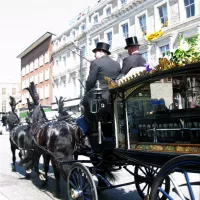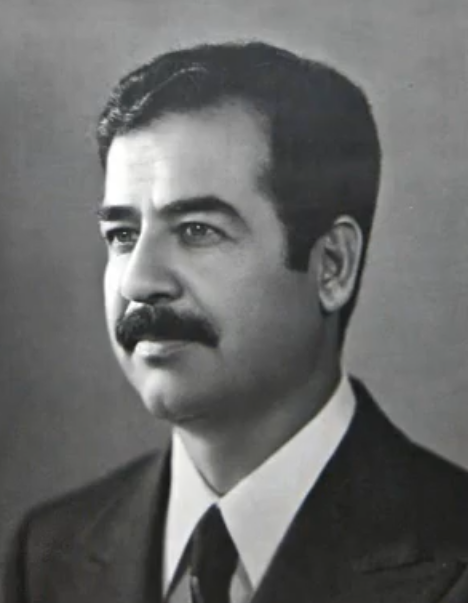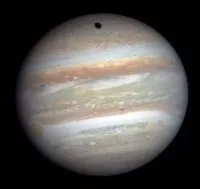Dragon 2, developed by SpaceX, is a partially reusable spacecraft designed for ISS missions and private spaceflights. It comprises a reusable capsule and an expendable trunk, with two variants: Crew Dragon for up to four astronauts, and Cargo Dragon for cargo transport, succeeding the Dragon 1. Dragon 2 launches on the Falcon 9 Block 5 rocket and returns to Earth via ocean splashdown.
July 2011: First Crewed Launch
On July 2011, STS-135 mission to ISS was the first crewed launch from U.S soil.
2012: Space Suit Development
In 2012, SpaceX was in discussions with Orbital Outfitters to develop space suits designed for wear during launch and re-entry, providing cooling and protection in case of cabin depressurization.
May 2014: Spacecraft Design Unveiled
On May 29, 2014, SpaceX unveiled the design of the Crew Dragon spacecraft during a press event held at its headquarters in Hawthorne, California.
2014: Crew Dragon seat cost
In 2014, the Commercial Crew Transportation Capabilities (CCtCap) contract valued a seat on a Crew Dragon flight at around US$88 million, while NASA's Office of Inspector General (OIG) estimated the face value to be around US$55 million.
2014: Cargo Dragon Becomes a Reality
In 2014, the cargo version of Dragon, called Cargo Dragon, became a reality after NASA sought bids for multi-year contracts to bring cargo to the ISS from 2020 through 2024.
May 2015: Pad Abort Test Conducted Successfully
On May 6, 2015, SpaceX successfully conducted the pad abort test at its leased SLC-40 launch site, where Dragon landed safely in the ocean 99 seconds after SuperDraco engine ignition.
January 2016: SpaceX Wins CRS-2 Contracts
In January 2016, SpaceX was awarded contracts for six CRS-2 flights to the ISS.
August 2018: Crew Announced for DM-2 Mission
On August 3, 2018, NASA announced that Bob Behnken and Doug Hurley would crew the DM-2 mission.
March 2019: Launch of Demo-1 Uncrewed Mission
On March 2, 2019, the first orbital test of Crew Dragon was an uncrewed mission called "Demo-1", launching to the ISS to test approach and docking procedures.
March 2019: Demo-1 Launched to ISS
On March 2, 2019, the first uncrewed test mission, Demo-1, was launched to the International Space Station (ISS).
April 2019: Capsule C204 Destroyed in Static Fire Testing
In April 2019, capsule C204 from Demo-1 was destroyed in an explosion during static fire testing.
April 2019: Crew Dragon C204 Destroyed in Explosion
On April 20, 2019, Crew Dragon C204, which was used in the Demo-1 mission, was destroyed in an explosion during static fire testing at the Landing Zone 1 facility.
April 2019: Capsule Explosion
On April 20, 2019, the capsule that was planned to be reused for the in-flight abort test exploded during static fire testing.
June 2019: Planned Reuse of Capsule
In June 2019, the capsule from the Demo-1 mission was planned to be reused for an in-flight abort test before it exploded in April.
July 2019: Initial Planned Date for Crewed Flight to ISS
In July 2019, SpaceX initially planned for a crewed flight to the ISS, but it was later delayed to May 2020 after a Dragon capsule explosion.
November 2019: SuperDraco Engine Test Repeated Successfully
On November 13, 2019, SpaceX successfully repeated the SuperDraco engine test with Crew Dragon C205 after modifying the Dragon 2 design following the explosion in April.
January 2020: Crew Dragon In-Flight Abort Test
On January 19, 2020, the Crew Dragon in-flight abort test was launched at 15:30 UTC from LC-39A, successfully demonstrating the separation and abort scenario in the troposphere.
May 2020: Delayed Crewed Flight to ISS
In May 2020, the crewed flight to the ISS was launched after delays caused by a Dragon capsule explosion.
May 2020: Crew Dragon Demo-2 Launched to ISS
On May 30, 2020, capsule C206, named Endeavour, successfully launched to the International Space Station with astronauts Bob Behnken and Doug Hurley.
May 2020: Demo-2 Crewed Flight Launched
On May 30, 2020, the first crewed flight, Demo-2, was launched.
August 2020: Crew Dragon Returns to Earth
On August 2, 2020, Crew Dragon undocked from the ISS and splashed down successfully in the Atlantic Ocean.
November 2020: SpaceX Crew-1 First Operational Flight
On November 16, 2020, Crew Dragon's first operational flight, SpaceX Crew-1, occurred after several test flights.
2020: Cargo Missions to ISS
In 2020, Cargo Dragon began transporting cargo to the ISS.
August 2021: Extend-the-Lab Feature Announcement
On August 29, 2021, during the CRS-23 launch, the Extend-the-Lab feature was announced, allowing Cargo Dragon to provide power to payloads, saving space in the ISS.
March 2022: SpaceX to finish final capsule
In March 2022, SpaceX President Gwynne Shotwell announced that SpaceX was finishing their final Crew Dragon capsule but will still manufacture components for refurbishing.
April 2024: Cargo Dragon Missions Update
As of April 2024, Cargo Dragon has completed nine missions to and from the ISS, with six more planned.
November 2024: Cargo Dragon Performs ISS Reboost Test
On November 8, 2024, Dragon Cargo Dragon C208 performed a test reboost of the ISS using its aft-facing Draco thrusters at 17:50 UTC.
2024: SpaceX to build fifth Crew Dragon capsule
In 2024, SpaceX made the decision to build a fifth Crew Dragon capsule which would be available for use.
2024: SuperDraco Thrusters Re-enabled for Propulsive Landing Backup
In 2024, the use of SuperDraco thrusters for propulsive landing was re-enabled as a backup for parachute emergencies during the capsule's return to Earth.
January 2025: Crew Dragon Capacity
As of January 2025, Crew Dragon is stated to be capable of carrying seven astronauts, though it typically carries two to four crew members and has never carried more than four in its operational history.
2025: Boeing Starliner first operational flight
As of 2025, Boeing Starliner's first operational flight is scheduled, as Crew Dragon was the less expensive proposal with the Boeing Starliner deemed stronger.
2030: Planned Launch of US Deorbit Vehicle
NASA plans to launch the US Deorbit Vehicle in 2030, where it will remain attached to the ISS for about a year as the station's orbit decays.
Mentioned in this timeline

SpaceX founded in is an American space technology company It...
California is the most populous US state located on the...

Boeing is a multinational corporation that designs manufactures and sells...
NASA the National Aeronautics and Space Administration is an independent...

Fire is a rapid oxidation process specifically combustion that releases...
Texas located in the South Central region of the United...
Trending

23 minutes ago Arcane's Creative Team Discusses Challenges, Future Characters, and Epic Final Season on Netflix.

1 hour ago American tourist drugged and robbed of $123K in crypto by fake Uber driver.

1 hour ago Funeral Directors: Mental Health Connection, Home Relocation, and Regulatory Veto.

1 hour ago Trump advised to avoid Saddam's Iran mistake; port explosion recovery efforts continue.

2 hours ago Tsunami Risk: West Coast Faces Potential Flooding From Cascadia Subduction Zone Earthquake.
2 hours ago SpaceX Dragon Undocks from ISS, Set for Splashdown: Cargo Mission Ends
Popular

Jupiter the fifth planet from the Sun is the Solar...

Cristiano Ronaldo often nicknamed CR is a highly decorated Portuguese...

Steve Irwin the Crocodile Hunter was an influential Australian zookeeper...

LeBron James nicknamed King James is a professional basketball player...

Pope Francis is the current head of the Catholic Church...

Kash Patel is an American lawyer and former federal prosecutor...